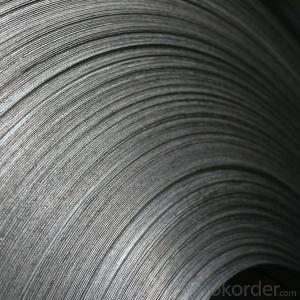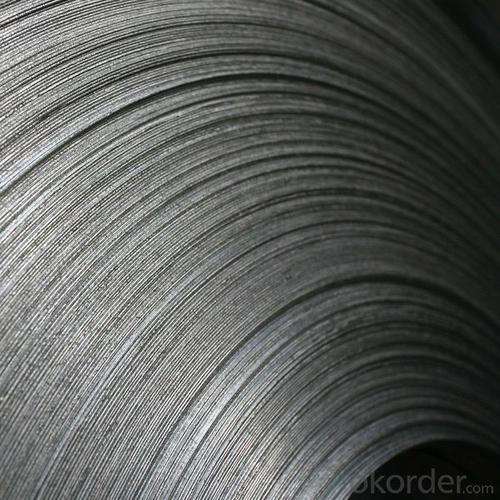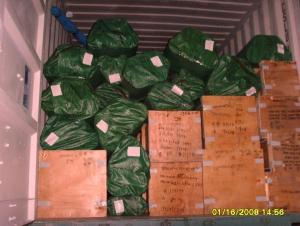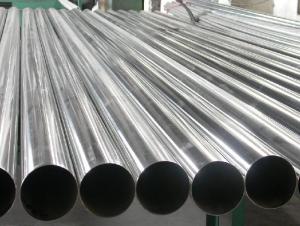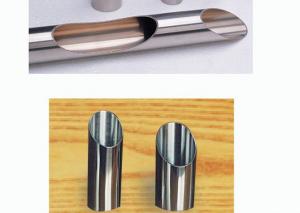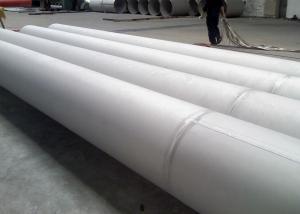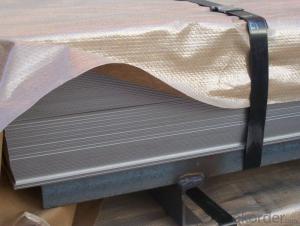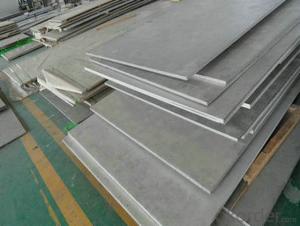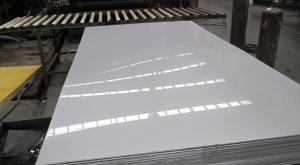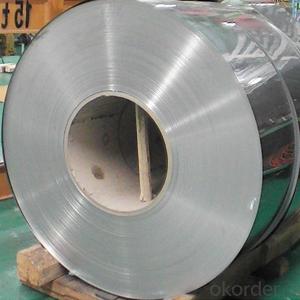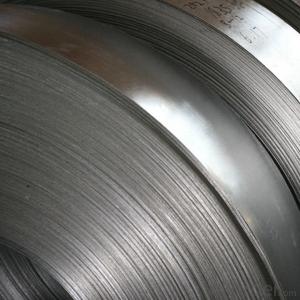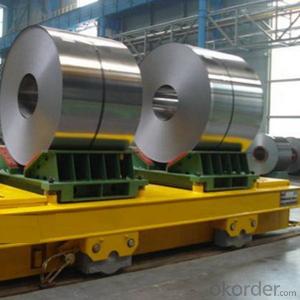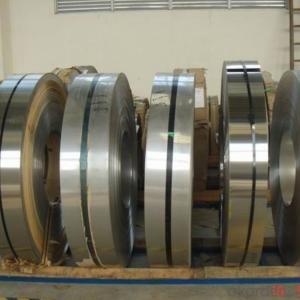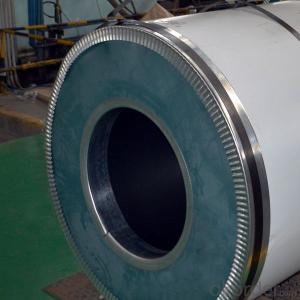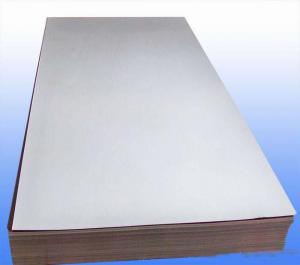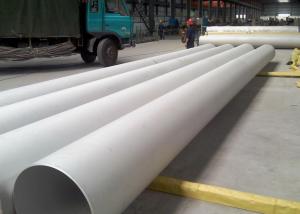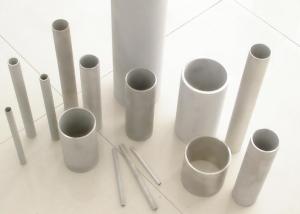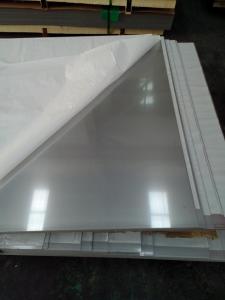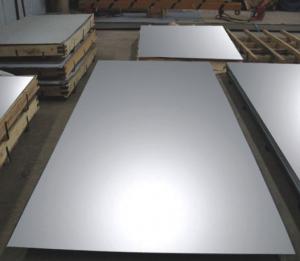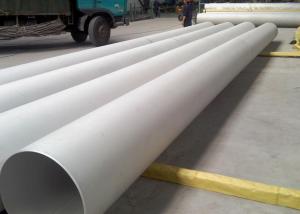Steel Products Material Stainless Steel Sheets NO.2B Finish Grade 304L Finish Made in China
- Loading Port:
- China main port
- Payment Terms:
- TT OR LC
- Min Order Qty:
- 18 m.t.
- Supply Capability:
- 1000000 m.t./month
OKorder Service Pledge
OKorder Financial Service
You Might Also Like
Specification
Products Description
Product | stainless steel coils/plates/sheets | ||
Discharge Port | Any Port, China | ||
Size | Coils | Cold Rolled: | Thickness0.3-8mm,Width:280-2100mm |
Hot Rolled : | Thickness3-14mm,Width:650-2100mm | ||
Plates | Thickness2-80mm,Width:1500-3000mm | ||
Coil Weight | About 20 Tons | ||
Grade | 201,202,304/304L/304H,316/316L/316H,321/H,310S,409/L,430 etc. | ||
Technique | Hot Rolled/Cold Rolled | ||
Finish | 2B, BA, 2D, No1, No2, No4,NO.8,SB etc | ||
Edge | Mill Edge / Slitting Edge | ||
Package | In bundles, or as customer's requirement | ||
Place of Origin | Made in China | ||
MOQ | 20 Tons | ||
Payment Terms | 100% LC at sight,or 30%TT in advance, balance against B/L copy | ||
Delivery Time | With 30-40 days after deposit | ||
Packaging & Delivery
Packaging Detail | Standard export packing or following customer's demand |
Delivery Time | Within 30-40 days after deposit or according to the order quantity |
Detail picture of Products:
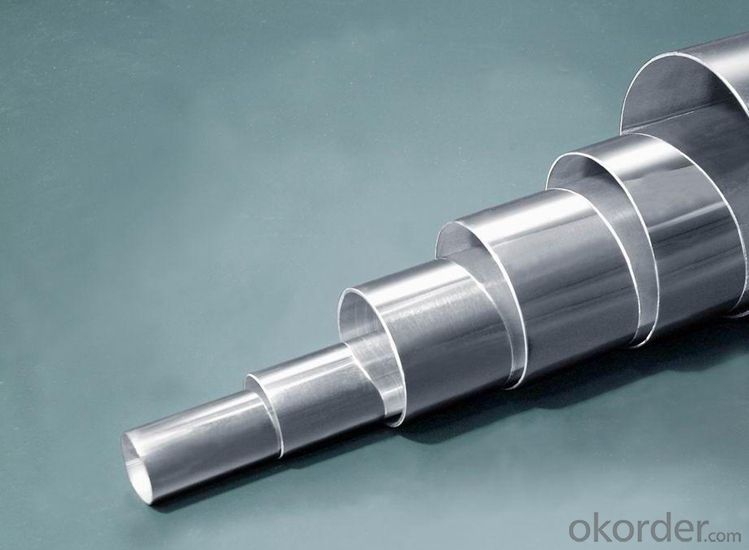
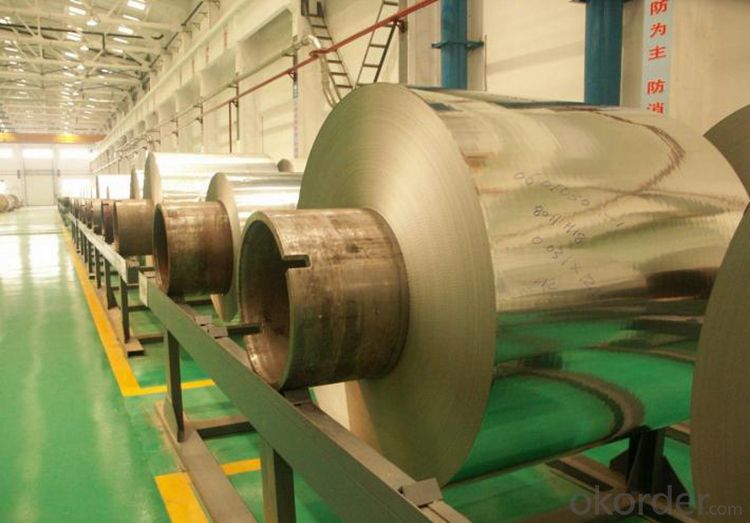
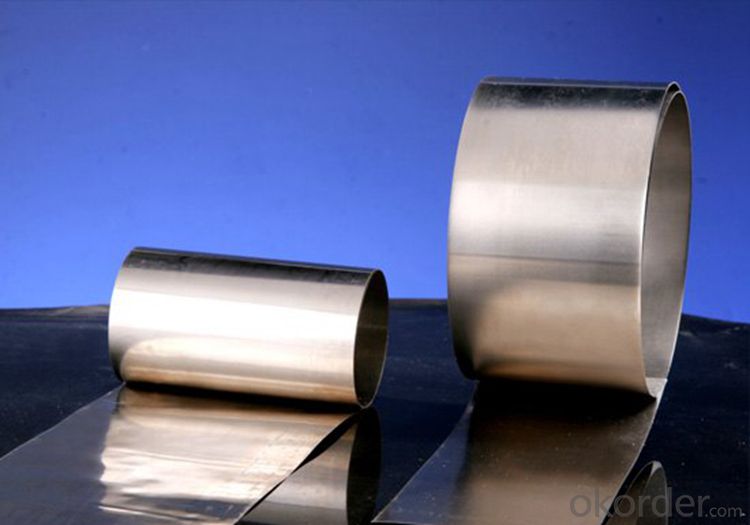
Application:
Finish | Definition | Application |
2B | Those finished, after cold rolling, by heat treatment, pickling or other equivalent treatment and lastly by cold rolling to given appropriate luster. | Medical equipment, Food industry, Construction material, Kitchen utensils. |
BA | Those processed with bright heat treatment after cold rolling. | Kitchen utensils, Electric equipment, Building construction. |
NO.3 | Those finished by polishing with No.100 to No.120 abrasives specified in JIS R6001. | Kitchen utensils, Building construction. |
NO.4 | Those finished by polishing with No.150 to No.180 abrasives specified in JIS R6001. | Kitchen utensils, Building construction, Medical equipment. |
NO.1 | The surface finished by heat treatment and pickling or processes corresponding there to after hot rolling. | Chemical tank, pipe. |


FAQ
Q: How long is the delivery time?
A: Normally 30-40 days, but mostly according to the specific requirements or the quantity
Q: Could you send me sample?
A: We can supply you with the sample for free, but the delivery charges will be covered by customers.
- Q: How do you straighten bent stainless steel sheets?
- Depending on the severity of the bend, there are several methods available for straightening bent stainless steel sheets. 1. For slight bends, a rubber mallet or hammer can be used to gently tap the bent area back into place. Gradually apply even pressure, starting from the center of the bend and moving towards the edges. It is important to avoid striking the stainless steel too forcefully, as this could cause further damage. 2. In cases of more severe bends, heat can be used to soften the stainless steel, making it easier to straighten. Begin by heating the bent area using a blow torch or heat gun. Once the stainless steel reaches a red-hot temperature, carefully use pliers or a vice grip to straighten the sheet. It is important to note that this method is most suitable for thicker stainless steel sheets, as thinner ones may warp or lose their shape when exposed to excessive heat. 3. For larger or heavy-duty sheets that cannot be easily straightened by hand, mechanical straightening is recommended. This involves using specialized tools like a hydraulic press or metal brake to apply controlled pressure and straighten the bent stainless steel sheet. It is crucial to carefully follow the manufacturer's instructions when using these tools to prevent accidents. Always wear appropriate safety gear, such as gloves and eye protection, when working with stainless steel sheets. If you are unsure or uncomfortable with straightening the sheets yourself, it is advisable to seek assistance from a professional metalworker or fabrication shop.
- Q: What are stainless steel sheets?
- Stainless steel sheets are flat pieces of metal made from stainless steel, a type of alloy that contains chromium, nickel, and other elements. These sheets are highly versatile and widely used in various industries for their excellent corrosion resistance, durability, and aesthetic appeal. They are manufactured through a process called hot rolling or cold rolling, which involves passing the steel through a series of rollers to achieve the desired thickness and finish. Stainless steel sheets are commonly used for applications such as construction, automotive manufacturing, kitchenware, appliances, and architecture. They come in different grades, surface finishes, and sizes to cater to different requirements. Whether it's for decorative purposes or functional applications, stainless steel sheets offer a reliable and long-lasting solution.
- Q: How do you install stainless steel sheets?
- To install stainless steel sheets, you will need a few basic tools and follow these steps: 1. Measure and prepare: Start by measuring the area where you want to install the stainless steel sheets. Ensure that the surface is clean, dry, and free from any dust or debris. If needed, sand down any rough spots or imperfections on the surface. 2. Cut the sheets: Using a metal cutting tool like a circular saw or a jigsaw with a metal cutting blade, cut the stainless steel sheets to the desired size and shape. Make sure to wear safety goggles and gloves while cutting to protect yourself. 3. Apply adhesive: Apply a high-strength construction adhesive to the backside of the stainless steel sheet. Make sure to apply the adhesive evenly, leaving no gaps or air pockets. You can also use a notched trowel to spread the adhesive for better coverage. 4. Position and secure: Carefully place the stainless steel sheet onto the prepared surface, making sure to align it properly. Apply gentle and even pressure to ensure the sheet adheres to the surface. You can use a roller or a clean cloth to press the sheet firmly onto the surface. 5. Secure with screws: If necessary, use stainless steel screws to secure the sheet further. Place the screws along the edges and corners, ensuring they are evenly spaced. Make sure not to overtighten the screws to avoid damaging the sheet. 6. Trim and finish: If any excess stainless steel sheet is hanging over the edges, use a metal cutting tool to trim it down to the desired size. Once trimmed, smooth out any rough edges using a file or sandpaper. You can also use a stainless steel cleaner to remove any smudges or fingerprints and give it a polished finish. Remember to always follow the manufacturer's instructions for the specific stainless steel sheets you are using, as installation methods may vary slightly. Additionally, it is recommended to seek professional assistance if you are unsure or not comfortable with the installation process.
- Q: Can stainless steel sheets be used for decorative ceiling tiles?
- Yes, stainless steel sheets can be used for decorative ceiling tiles. Stainless steel is a versatile material that is known for its durability, corrosion resistance, and aesthetic appeal. It can be easily customized and fabricated into various patterns, textures, and finishes, making it an excellent choice for decorative purposes. Stainless steel ceiling tiles can add a modern and sleek look to any space, whether it is a residential, commercial, or industrial setting. Additionally, stainless steel is easy to clean and maintain, making it a practical choice for areas where cleanliness is crucial.
- Q: Are stainless steel sheets suitable for water treatment applications?
- Yes, stainless steel sheets are suitable for water treatment applications. Stainless steel has excellent corrosion resistance properties, making it ideal for use in water treatment processes. It is highly resistant to rust, staining, and chemical corrosion, ensuring the longevity and durability of the sheets. Additionally, stainless steel is easy to clean and maintain, making it hygienic for water treatment applications.
- Q: Are stainless steel sheets suitable for marine propellers?
- Marine propellers can indeed be made from stainless steel sheets. This material is highly favored for its exceptional ability to resist corrosion, a crucial quality when the propeller is regularly exposed to saltwater in a marine setting. Furthermore, stainless steel sheets possess remarkable strength and durability, allowing them to withstand the harsh conditions of the marine environment, including impacts and vibrations. Additionally, the low magnetic permeability of stainless steel helps minimize the formation of biofouling on the propeller, thereby enhancing its efficiency and performance. All in all, stainless steel sheets are extensively utilized and considered a suitable choice for marine propellers.
- Q: How do you prevent pitting or crevice corrosion on stainless steel sheets?
- To prevent pitting or crevice corrosion on stainless steel sheets, certain measures can be taken. First, ensuring proper cleaning and maintenance is crucial. Regularly cleaning the stainless steel sheets with mild detergent and water, followed by thorough rinsing and drying, helps remove any contaminants that can lead to corrosion. Additionally, avoiding exposure to corrosive substances like chloride-based cleaners or harsh chemicals is important. Applying a protective coating or passivating the stainless steel surface can also provide an extra barrier against corrosion. Passivation involves treating the stainless steel with a mild oxidizing agent to promote the formation of a passive oxide layer, which enhances the metal's resistance to corrosion. Proper design and installation practices are equally vital. Avoiding the use of dissimilar metals in contact with stainless steel sheets and ensuring proper sealing and gasketing in joints or crevices can prevent crevice corrosion. Adequate ventilation and avoiding stagnant conditions can also help minimize corrosion risks. Regular inspection and maintenance are necessary to identify and address any signs of corrosion promptly. This includes checking for signs of pitting or crevices, addressing any damage or scratches, and promptly repairing or replacing any corroded areas.
- Q: How do stainless steel sheets compare to other materials?
- Stainless steel sheets offer several advantages over other materials. They are highly resistant to corrosion, heat, and chemicals, making them suitable for various applications. Stainless steel is also durable, strong, and low maintenance, providing long-term value. Additionally, it has an attractive appearance and can be easily fabricated into different shapes and sizes. Overall, stainless steel sheets outperform many other materials in terms of performance, aesthetics, and longevity.
- Q: What is the maximum width available for stainless steel sheets?
- The maximum width available for stainless steel sheets can vary depending on the manufacturer and supplier. However, in general, stainless steel sheets are commonly available in widths ranging from 36 inches (0.91 meters) to 72 inches (1.83 meters). Some manufacturers may offer even wider options for specialized applications. It is always advisable to check with the specific supplier or manufacturer for the maximum width available, as it may vary based on their production capabilities and product offerings.
- Q: What are the different shapes available for stainless steel sheets?
- Stainless steel sheets come in various shapes to meet specific requirements and applications. Let's explore some of the most common options: 1. Rectangular sheets: These sheets are widely used and can be easily cut to the desired dimensions. They are available in different standard sizes. 2. Round sheets: Round stainless steel sheets are ideal for decorative purposes or when a seamless or curved surface is desired. They come in various diameters and thicknesses. 3. Square sheets: Similar to rectangular sheets, square stainless steel sheets are versatile and provide a symmetrical and uniform appearance. They can be easily customized to fit specific sizes. 4. Perforated sheets: These sheets have a regular pattern of small holes punched through them. They are commonly used in architectural and industrial applications that require ventilation, filtration, or visibility. 5. Embossed sheets: These sheets feature raised or recessed patterns on their surface, adding texture and visual interest. They find applications in interior design, furniture manufacturing, and automotive industries. 6. Expanded metal sheets: These sheets are created by cutting and stretching a solid stainless steel sheet, resulting in a grid-like pattern with diamond-shaped openings. They are commonly used in security fencing, walkways, and industrial settings. 7. Checker plate sheets: Also known as tread plate or diamond plate, these sheets have a raised diamond pattern on the surface. They are frequently used for slip-resistant flooring, stair treads, and decorative accents. These examples represent just a few of the available stainless steel sheet shapes. The choice of shape depends on the specific requirements, aesthetic preferences, and functional needs of the project.
Send your message to us
Steel Products Material Stainless Steel Sheets NO.2B Finish Grade 304L Finish Made in China
- Loading Port:
- China main port
- Payment Terms:
- TT OR LC
- Min Order Qty:
- 18 m.t.
- Supply Capability:
- 1000000 m.t./month
OKorder Service Pledge
OKorder Financial Service
Similar products
Hot products
Hot Searches
Related keywords
